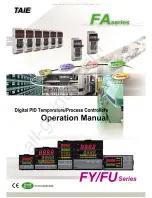
Start & Stop Parameters
17
17
17
17
Pump Control – Start Curves
Induction motors produce peak torque of up to 3 times
the rated torque towards the end of starting process.
In some pump applications, this peak may cause high
pressure in the pipes.
The HRVS-DN incorporates 5 different starting curves:
Start Curve 0
– Basic curve. Uses less feedback
signals.
Use at beginning of commissioning and when other
curves do not give good starting process.
Start Curve 1
– Standard curve (Default). The most
stable and suitable curve for the motor that prevents
prolonged starting and motor overheating.
Start Curves 2, 3, 4
– During acceleration, before
reaching peak torque, the pump control program
automatically controls the voltage ramp-up to reduce
peak torque.
Choice of three pump control acceleration curves
Speed
Time
Torque
Voltage
DOL
1
2
3
4
Start Curve 5
– Torque curve.
Provides linear torque control.
With certain loads, may cause
linear acceleration.
Note:
Normally starts with Start Curve 1. If towards
the end of acceleration, the peak torque is too high
(pressure is too high), proceed to Curve 2 then 3 or 4 if
necessary.
Pulse Start
This feature includes two settings:
Pulse Level [% of FLA]
Pulse Time [sec.]
These settings allow to use the pulse:
•
To start high friction loads,
requiring high starting
torque for a short time.
•
“Pedestal starting” –
holding the current at a
required level for some
time.
time
0 - 10 Sec.
I
Pulse level
time
Pulse time (0 - 10 Sec.)
I
Pulse level
After the end of the pulse time voltage is ramped
down/up to the current determined by the initial
voltage setting.
Note:
Pulse Start has no effect with Start Curve = 0.
Initial Voltage / Current
Determines the motor initial starting torque (the torque
is directly proportional to the square of the voltage).
Range: 10-50% Un (consult factory for extended
range).
This adjustment also determines the inrush current and
mechanical shock. A setting, which is too high, may
cause high initial mechanical shock and high inrush
current (even if current limit is set low as the Initial
Voltage setting overrides Current Limit setting).
A setting that is too low may result
in prolonged time until motor
begins to turn. In general, this
setting should ensure that the motor
begins turning immediately after
start signal.
U%
10%
50%
100%
If the initial voltage value is increased above the max
value, first line message changes to initial current.
Setting range is 100%-400% of motor FLA. When
initial current is set, starter causes current ramp instead
voltage ramp.
Current limit
Determines the motor highest current during starting.
Range 100-400% of FLA setting (consult factory for
extended range). A too high setting will cause greater
current drawn from main voltage and faster
acceleration.
A setting that is too low may
prevent motor from completing
acceleration process and reaching
full speed. In general, this setting
should be set to a high enough
value in order to prevent stalling.
Note:
Current limit is not operating
during Run and soft stop.
I%
400%
100%
Acceleration Time
Determines the motor voltage
ramp-up time from initial to full
voltage. Range 1-30 sec. (consult
factory for extended range). It is
recommended to set acceleration
time to the minimum acceptable
value (approx. 5 sec).
U%
1
100%
30
sec
Notes:
1.
Since current limit overrides acceleration time
when current limit is set low, starting time
will be longer than the preset acceleration
time.
2.
When motor reachs full speed before voltage
reachs nominal voltage, acceleration time
setting is overridden and cause the voltage to
ramp-up quickly to nominal.
3.
Starting curves 1, 2, 3 prevents quick ramp up.
t
T
















































